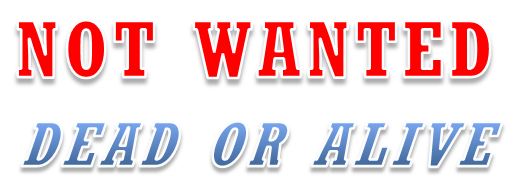They often seriously hate each other, administration and street folks. But some people out there just don’t care who hates them: they help these seemingly implacable haters help each other, they save lives and they save everyone money
There’s precious little trust waiting for you out there on the street, where any possibilities of offering help are often viewed with as much suspicion by those in authority as they are by those on the street
This is the kind of innovation that maybe even the most committed technophobe can love.
It’s all about finding ways of communicating with people who don’t want to talk to you if you ‘aren’t one of them, but want to help’, people who may see you as either a potential threat or even a target.
Warning
After about 25 minutes, this video will suddenly get too hard for squeamish people (like me) to watch.
People whose behaviours are often based upon motivations that you aren’t used to, whose problems are no less real than your own, but are problems which, if you had them, you would address in ways that are laughably unrealistic for them.
Street medicine people are usually volunteers and they know that they need to treat people living on the street with exceptional humility, dignity and respect, because these are people who are typically experiencing much more harsh and challenging conditions than anyone who isn’t homeless: street people can be surprisingly tough and resourceful as well as being fiercely independent.
The diversity itself poses problems (newly streetbound, those that don’t want to be, those that have been forever, the mentally ill, runaways, those that just want to live outside the rat-race, those that stay in one place, those that move from place to place, those with cast-iron constitutions, the weak and the dying, substance abusers and drinkers, those who sometimes get work, those that don’t want to try, the violent and the vulnerable, solitaries and sociables, those that help others, those living in camps with their own infrastructure and even their own officials).
Even in places with universal healthcare, there are almost inevitably people living outside the system, who need new and imaginative ways to get their medical needs attended to.
This video is about the people who are striving to innovate their way into the new solutions that are needed to make street medicine as effective as it needs to be when other options won’t work.
How can street medicine people save the public money?
By successfully persuading street people to allow themselves to be admitted into hospital for pre-emptive treatments for things like frostbite, before things deteriorate and they have to be brought in as emergency cases with life-threatening conditions: attentive and preventative street medicine practice can sometimes reduce overall treatment costs by orders of magnitude.
Here’s an extract from a Wikipedia article on Street Medicine:
Street Medicine is an emerging collaboration of health care professionals, formerly homeless outreach workers, and others that has been happening globally since the early 1990s.
Street medicine practice is defined as those health care and related services that are delivered directly to persons sleeping on the streets, along the river banks, and in the abandoned buildings, etc., of cities.
Pioneers of street medicine have been practicing their art as the world’s homeless population has increased, but largely in isolation.
Networking efforts over that past two decades have resulted in the recognition that a new field of medicine has emerged.
The term Street Medicine, in this context, was coined by Dr. Jim Withers who has been one of the leaders in the movement.
His program, Operation Safety Net in Pittsburgh, Pennsylvania, has hosted the annual International Street Medicine Symposium in various cities since 2005.
At this first meeting, the keynote speaker was Dr. Jack Preger. Preger has been practicing street medicine in Calcutta, India since 1979 and has founded the Calcutta Rescue relief agency.
The group collaborates to improve the care of the unsheltered homeless (“rough sleepers”), to support street medicine practitioners, to conduct research, and to advocate for health care justice.
As of 2007, twenty-one cities of the United States and eleven international cities in four continents are represented.
The Street Medicine Institute is being formed as a non-profit to coordinate and enhance these activities.
It has been supported by the Robert Wood Johnson Foundation and the Glaxo Smith Kline Foundation.
The purpose of the Institute includes the development of best practices for street medicine, the creation and enhancement of street medicine programs as requested, and the training of health care students who wish to specialize in the skills of street medicine practice.
In 2007, the Street Medicine Fellowship was initiated through the Donald E. Withers, MD Memorial Fund for Street Medicine Education.


